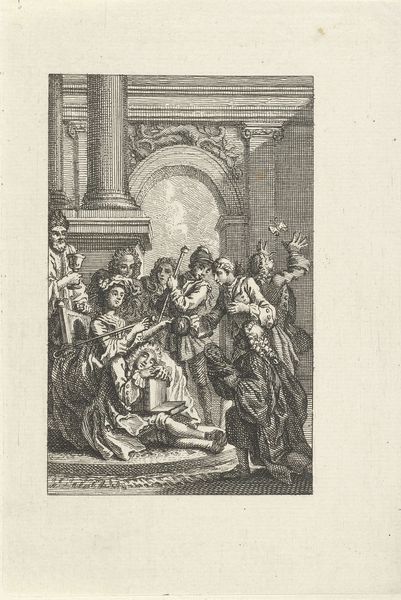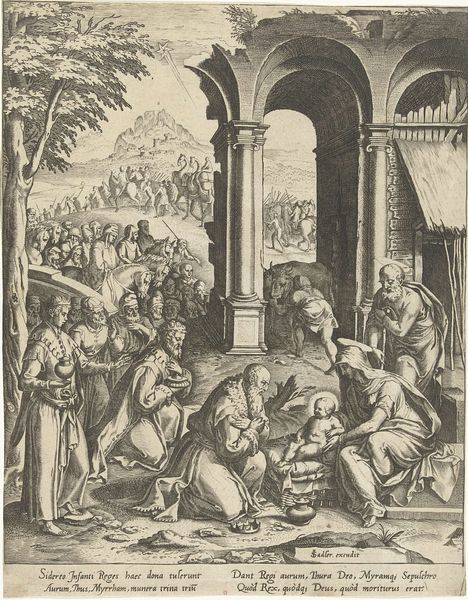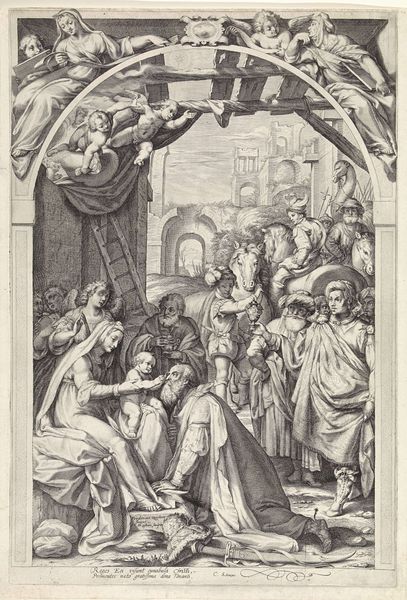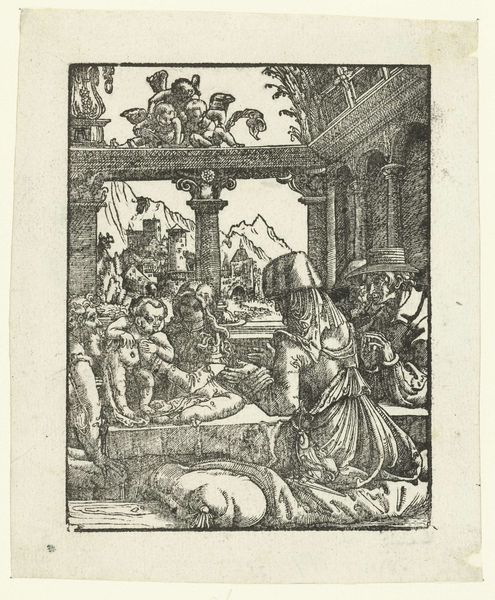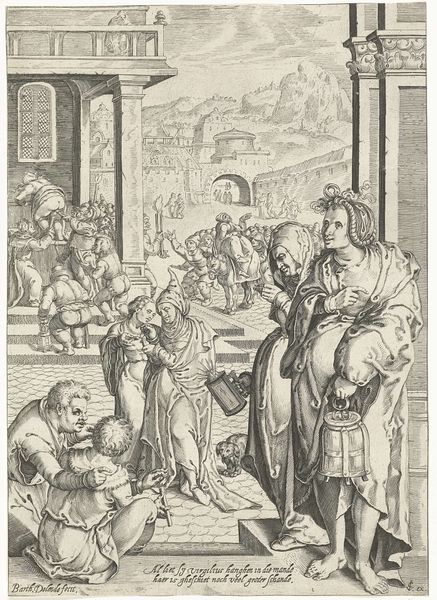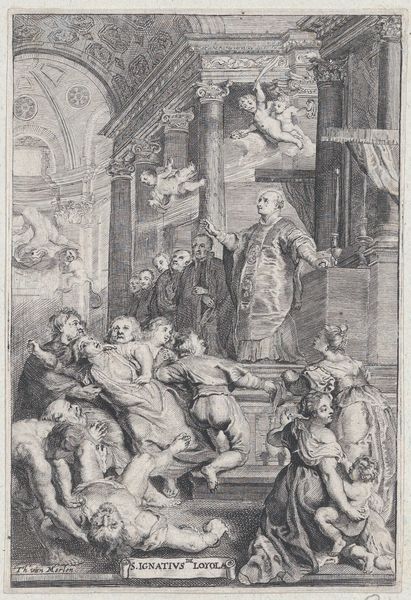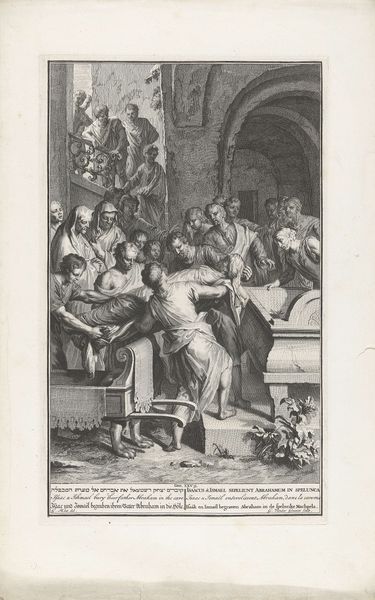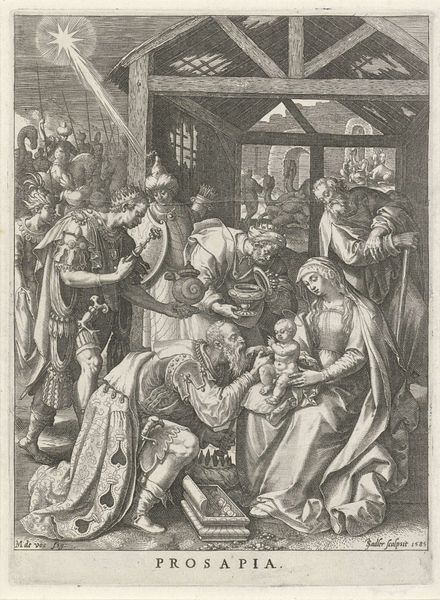
engraving
#
old engraving style
#
figuration
#
history-painting
#
northern-renaissance
#
engraving
Dimensions: height 257 mm, width 194 mm
Copyright: Rijks Museum: Open Domain
Curator: This engraving, "Hongerigen spijzigen," was created by Dirck Volckertsz Coornhert in 1552 and resides here at the Rijksmuseum. What strikes you first about it? Editor: My immediate impression is a story etched in shades of grey – suffering offset by measured acts of charity within a detailed classical structure. Almost stage-like. Curator: I see it too, a stage. Coornhert captures a scene from the Christian acts of mercy, “Feed the Hungry." Notice how he combines Northern Renaissance sensibilities with Italianate architecture—a common artistic trend in that era. What do you read in this merging of styles? Editor: Well, the figures have a Flemish earthiness, certainly not idealized. Yet, the architectural setting – those grand arches – speaks of classical Roman virtue and order. It’s as if the message is that charity should be as structured and enduring as a Roman aqueduct. But there is more at play than just structure, there is an element of religious syncretism as well...a melding of Christianity and Roman ideals. Curator: Intriguing! And what of the imagery itself? Consider that Coornhert was a prolific engraver but also a complex intellectual, a theologian and a politician who ran afoul of religious leaders, not entirely beholden to any system or convention... Editor: That definitely tracks...look at how much detail he invested in portraying physical suffering versus how uniformly he depicts those who offer assistance. The recipient of charity commands our focus in ways that the actors don't necessarily earn...or are willing to have. It creates tension, it makes us consider this virtue. Curator: Absolutely! And this is why this relatively modest engraving endures. He's asking the viewer not merely to witness charity but to interrogate it, right? Is that balance achieved, or is there a deep, uncomfortable imbalance? It is not merely the literal feeding of the hungry but a prompting to reflect on what charity means. It almost echoes across centuries... Editor: Yes! Exactly. An important piece in contemplating how and why humans care for one another. An idea perfectly encapsulated and memorialized. Curator: So eloquently put. Now, let's go find something that might contrast wildly in our collection and challenge what we've already observed!
Comments
No comments
Be the first to comment and join the conversation on the ultimate creative platform.

